If you were running a global car maker and your sales had gently more than doubled over the past 11 years, surely you would be pretty happy, wouldn’t you?
Especially if you have global sales and a global manufacturing footprint, your factories are running at capacity and you sold around five million cars in 2015? Even better, you have just been rated number one in the US’s rigorous JD Power Initial Quality Ranking survey for non-premium brands.

So what’s the problem?
Well, Hyundai has one – and it’s pretty all-encompassing. For more than two years, senior management have been fretting over the medium and long-term future of the company. They have come to believe that Hyundai’s brand image is not clear or robust enough to ensure future success.
Hyundai is coming to the end of its role as the expanding newcomer, especially in the US, where it first sold cars in 1986. It didn’t start building cars until 1968, when it made the Ford Cortina under license. Its first home-grown model, the 1975 Pony, was a remarkable international production. George Turnbull, ex-boss of Austin Morris, and a small ex-BL team used Mitsubishi engines and Ital-styled bodies to create the Pony family.
Hyundai has proved to be a manufacturing powerhouse. Its giant Ulsan plant is the world’s largest and made 1.78m vehicles in 2015. Its two Chinese plants turned out 1.25m vehicles and they have plans for two more (even though sales took a beating in 2015 as China’s economy stumbled).
In terms of engineering prowess, Hyundai also has a huge story to tell. To produce what it claims was the world’s first production fuel cell vehicle (the ix35, launched in 2012) is a remarkable achievement for a firm that didn’t have a home-developed engine until 1997. Today, it has 10 R&D centres and some 10,000 engineers.
But when I was on a recent trip to drive the Ioniq and Genesis G90, one senior Hyundai official was very candid about the firm’s corporate worries. “When you drive the Ioniq,” he said, “please try not to think that it’s a Hyundai.”
Another senior manager complained that “people don’t love our cars”. He wanted to know how Hyundai could become “the most beloved” brand and not just admired for the way it engineers cars.

It launched its marketing strategy of ‘modern premium’ in 2011, reinforcing it with a global makeover of its dealerships and extensive cultural sponsorships. Clearly, though, the fear is that this is not working well enough.
Although the candour of senior management at Hyundai is surprising, there’s evidence that if the brand does settle into one of being a highly competent middle-market maker, trouble is indeed ahead. As Ford and Fiat Chrysler Automobiles have shown with their product moves in recent months, being ordinary carries risks as the new car market continues to slowly split into budget and premium. If you can’t be seen as even moderately premium, you could end up as a discount brand, with all that means for future margins.
Which is why Hyundai is now taking a much more proactive approach than just standard-issue brand management. The new Ioniq family will spawn a hybrid, plug-in hybrid and pure EV on the same platform (itself related to the Elantra). In time, it seems that the Ioniq could become an effective sub-brand.
A serious attempt to crack the premium market is being made under the Genesis brand. The G90 flagship is already on sale, but it will be followed by the smaller G80 and G70. Although those rear-wheel-drive and all-wheel-drive saloons are aimed at the US, the Middle East and China, two Genesis SUV models are also expected, and these seem a dead cert for Europe.
Certainly, the engineering content and quality of the Genesis platform gives the models a very sound base. The new Genesis boss is Manfred Fitzgerald, former director of brand and design at Lamborghini. Luc Donckerwolke, formerly of Bentley and Lamborghini, will be the design boss for the new Prestige Design Division.
The third prong of Hyundai’s reinvention is the N brand, which will build serious high-performance versions of Hyundai’s road cars and burnish its credentials through its World Rally Championship team.
You can’t fault the extent and seriousness of Hyundai’s three-front diversification. But it’s an extraordinary commentary on the automotive industry that being very good indeed might not be enough for future prosperity.

ECO-FRIENDLY CARS
The Ioniq is Hyundai’s first mainstream hybrid and part of the company’s plan to have 22 ‘eco-friendly’ cars on sale by 2020. There’ll be 12 hybrids, six plug-in hybrids, two electric vehicles and two fuel cell vehicles (the hydrogen-powered ix35 is already in limited production in Korea).
Three of these new models will have ‘Ioniq’ badging, because as well as a conventional hybrid model, the car will also be sold as a plug-in hybrid and a pure EV.
The core of the engineering approach is to ‘keep it simple’, which enables Hyundai to reduce costs and thus make a hybrid that is much more cost-competitive with modern diesels. Indeed, the new hybrid transmission – which uses a single electric motor and a six-speed dual-clutch automatic gearbox – is certainly simpler than the Prius’s twin motors and CVT arrangement.
Moreover, Hyundai says that by becoming the first car maker to engineer a dual-clutch auto that is quick-shifting enough for hybrid, it will also eliminate the much-disliked droning and ‘elastic’ sense of acceleration associated with CVT hybrid transmissions.
The three-model Ioniq family is based on a modified version of the platform that underpins the new Vauxhall Astra-sized Elantra model. But as well as getting a bespoke multi-link rear axle (and having much of the suspension components made from aluminium), the rear half of the Ioniq floorpan is modified to incorporate three different battery capacities.
This hybrid version gets a small 1.5kWh battery. This is slotted into the same space under the rear seat as the fuel tank, which itself is reduced to a 45-litre capacity. The plug-in and all-electric versions of the Ioniq – the EV is shown here, distinguished by the blanked-off grille – get progressively bigger battery packs, which are squeezed under the boot floor and, for the EV, also replace the fuel tank.
We don’t yet know the exact size of these two battery packs, but Hyundai estimates an EV-only range of 32 miles for the plug-in hybrid version and 155 miles for the EV.

IONIQ - THE THREE-IN-ONE CAR
Driving the Ioniq hybrid out into the Seoul morning traffic, it’s clear within the first few hundred yards that this car is particularly well engineered for the lower speeds and heavy traffic of cities such as Tokyo and Los Angeles.
The chassis tuning – in this Korean-spec version at least – is on the pleasant side of firm. There’s a little bump-thump from the rear end at low speeds on rumpled inner-city roads, but the Ioniq is often almost EV-like in its progress.
There’s no hesitation from this transmission and Hyundai really has delivered on developing a hybrid with a sense of ‘direct drive’. It’s smooth and very refined in city situations, especially when the engine is in stop-start mode. The braking system also seems a step ahead of many regenerative systems, sliding smoothly between braking on the motor and braking mechanically.
Seoul’s urban motorway network has a speed limit of just 56mph, so it’s hard to tell how the the Ioniq would cope with high-speed traffic on British motorways, something with which the not dissimilar Honda Insight Mk2 struggled to cope. But again, the transmission is impressively normal in its responses to demands for acceleration, shifting quickly and locking the engine back into the front wheels without hunting. On the gentle run to the hills east of Seoul, the Ioniq averaged nearly 52mpg.
A short drive along undulating A-roads showed just how clever the transmission software is in the real world. The live graphic showing how the Ioniq shuffles between engine power, battery power and coasting (when heading downhill) revealed a powertrain that’s extremely reactive and quick-thinking. These conditions also showed that the chassis has some life and character, although it is hardly a compelling driver’s car.
The Ioniq is perhaps the most ‘normal’-feeling small hybrid yet. Hyundai was quite right in identifying what could be improved on the benchmark Toyota Prius Mk3. On the downside, it might be a little too self-effacing in presentation and driving character. For drivers used to a typical diesel, it would be difficult to switch to a car like the Ioniq. Whereas a driver can push the diesel quite hard and still be rewarded with a combination of speed and frugality, this hybrid has to be piloted thoughtfully to extract maximum economy.

GENESIS - THE PUSH UPMARKET
Hyundai established a new Prestige Design Division to develop the Genesis G90, and it’s fair to say that the company has thrown everything at creating this car.
It kicks off with a completely re-engineered rear-wheel-drive, stretched structure, which is claimed to be 6% stiffer in overall bending rigidity than the current Mercedes-Benz S-Class. Some 52% of this structure is made from advanced high-strength steel (up from 17% of the outgoing platform) and nearly 200 metres of structural adhesive is also used to bond the structure together.
To be class-leading in the suppression of noise, vibration and harshness (NVH), the cabin is lined with extra layers of sound-absorbing materials, including acoustic film on all the windows, three-layer weather seals on the doors and a single seal around the powertrain bay.
This structure rolls on substantial frames, with double wishbone suspension up front and a multi-link rear. Our V8 test car had four switchable driving modes and adaptive damping.
The G90’s down-the-road refinement is very impressive. However, the quietness of the powertrain and lack of suspension-transmitted noise into the cabin do allow what tyre noise there is to stand out. The suppression of wind ruffle around the A-pillars and door mirrors is outstanding, as are the seats.
Despite being tuned on the Nürburgring, the G90 is not designed to be flung around. It is simply too big and well planted to do anything other than sweep the occupants along – although on the tight hill roads of northern Seoul, the car proved to be exceptionally easy to place and manoeuvre.
The G90’s contact points are well weighted. The steering has a satisfying heft and the brake response is also beautifully judged. It is not inert by any means but balances itself between relative alertness and stability. Ultimately, the G90 has a kind of commanding competence that allows the driver to relax and not think much about the mechanics of conducting the car.

N DIVISION - THE PERFORMANCE ANGLE
After more eco-friendly cars and the Genesis premium brand, the third prong of Hyundai’s attempt to reinvent itself is the establishment of a new performance brand and a serious assault on the World Rally Championship.
The WRC team came first. It was launched in 2014 with a car based on the i20 bodyshell, a 300bhp 1.6-litre engine, a six-speed sequential gearbox and all-wheel drive. It’s not the first time Hyundai has been involved in the WRC; it ran a team based around the old Accent model between 2000 and 2003.
Last year the i20 WRC three-car team managed a second-place finish in Sweden and two third placings in Italy and Spain. In January this year, Thierry Neuville finished third on the Monte Carlo Rally.
Hyundai hired Albert Biermann to lead the creation of the N brand, as well be head of testing. Biermann had previously been in charge of engineering models for BMW’s M division.
Although Hyundai hasn’t gone into much detail about the N line-up, it’s thought there will be three initial models. A hot version of the next-generation i30 hatch is due next year and will be aimed at Europe. There is also rumoured to be an N version of the upcoming Genesis G70 that will be sold globally. The third model could be based on the i20 Coupé or the next Veloster.
Biermann said the N models would be “track day capable”. He added: “We want these N cars to deliver affordable high performance. It will be the wild end of the brand. We will develop a handful of models over the next five years.”
Biermann said the cars “would benefit from significant engineering improvements, such as better engine and brake cooling and much greater durability for suspension components”.
Extensive circuit testing is not just to hone the handling, but also to ensure component durability. Biermann said Hyundai’s chairman wants a quality target that will ensure Hyundai models have the same ‘new car’ quality when they are 10 years old.

































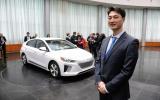


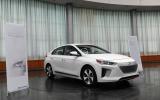


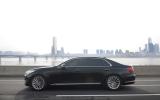



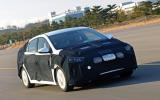
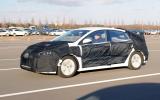


Join the debate
Add your comment
Hyundai
Ioniq
I honestly think the problem